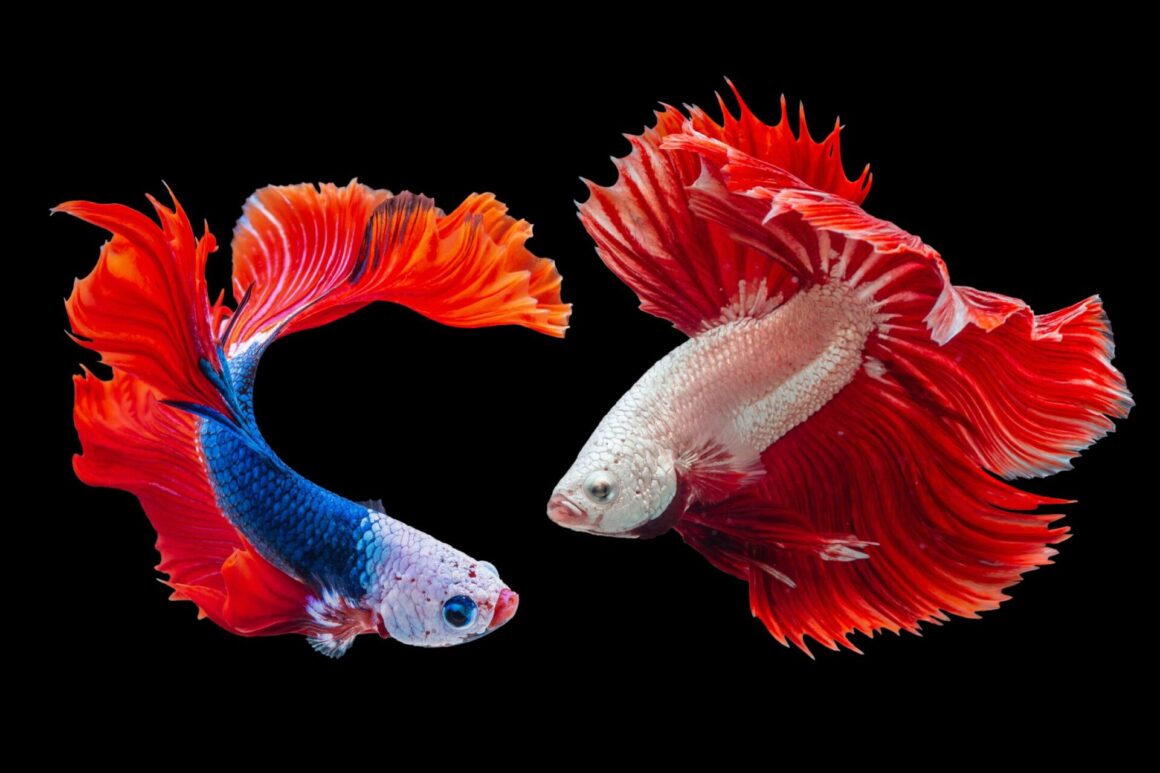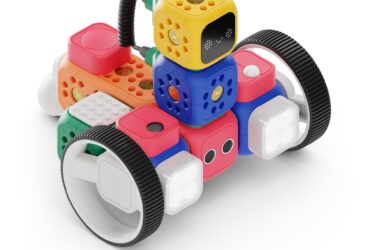Introduction
In the era of technological advancement, artificial intelligence (AI) has transcended various industries, from healthcare to transportation. Now, AI is taking a plunge into our homes, revolutionizing one of the most delightful hobbies – maintaining a home aquarium. The very concept of a fish tank filled with colorful aquatic life has been transformed into a high-tech, interconnected system thanks to AI-powered aquariums.
Imagine feeding your fish or monitoring water quality from miles away with just a click on your smartphone. Automated fish feeding, intelligent control systems, and digital fish care have not only made aquarium maintenance easier but also more efficient and precise. No longer confined to movies or high-end commercial aquariums, AI-driven home aquariums are becoming accessible to enthusiasts and professionals alike.
This intersection of AI and home aquariums is more than just a convenience; it is a step towards sustainable pet care and a futuristic approach to a beloved pastime. This article explores the fascinating world of AI-powered home aquariums with automated feeding systems. From understanding the underlying technology to exploring the benefits and challenges, we will dive into how AI is redefining the aquarium experience, turning a traditional fish tank into a smart and self-sustaining ecosystem.
Join us as we uncover how artificial intelligence is transforming the way we care for our fish, providing new opportunities for monitoring, feeding, and overall management.
AI-Powered Home Aquariums Overview
Definition and Importance of AI in Aquariums
AI-powered aquariums combine artificial intelligence with traditional fishkeeping to create intelligent, automated systems that simplify tasks like feeding, temperature control, and water quality monitoring. Leveraging sensors, data analytics, and machine learning, AI in aquariums offers a dynamic and responsive environment, ensuring optimal conditions for aquatic life.
Evolution of Intelligent Aquarium Systems
The journey of integrating AI into home aquariums began with the advent of automation in pet care. From basic timers for feeding to complex IoT-enabled devices, intelligent aquarium systems have come a long way. Today’s AI-powered aquariums can adapt, learn, and predict the needs of the inhabitants, offering a more natural and thriving habitat. Innovations like remote monitoring and smart feeding equipment are not only convenient but also foster a deeper connection between owners and their aquatic pets.
Benefits of Digital Fish Care and Automation
- Convenience: Automated feeding and monitoring reduce manual efforts, allowing more enjoyment of the aquarium without daily chores.
- Precision: AI algorithms ensure precise feeding, lighting, and filtration, maintaining the ideal environment for each species.
- Sustainability: Smart energy management and waste control contribute to eco-friendly practices in fishkeeping.
- Accessibility: AI technology makes professional-level care accessible to hobbyists, offering insights and control previously reserved for experts.
- Innovation: AI-powered home aquariums pave the way for exciting new features, such as virtual fish health checks and behavior analysis.
These benefits not only elevate the experience for aquarists but also promote healthier and happier aquatic life. The integration of AI into aquariums is more than a technological novelty; it’s a game-changer that’s redefining the relationship between humans and their aquatic companions.
Automated Fish Feeding and AI Fish Tank Management
How Automated Fish Feeding Works
Automated fish feeding is one of the most remarkable features of AI-powered aquariums. These systems utilize sensors and pre-programmed algorithms to determine the right feeding schedule and portion sizes for different fish species. AI-enabled feeders can adapt to fish behavior and preferences, dispensing food at appropriate intervals. Whether you’re at home or away, automated feeding ensures your fish receive the proper nutrition without overfeeding or starving.
AI Fish Care Technology and its Application
Beyond feeding, AI fish care encompasses various aspects of aquarium management, from water quality control to disease prevention. Here’s how AI contributes:
- Water Quality Analysis: AI algorithms continuously monitor pH levels, temperature, and other essential parameters, adjusting them as needed.
- Lighting Control: Intelligent systems optimize lighting conditions to replicate the natural habitat, supporting both plant growth and fish health.
- Health Monitoring: Some advanced aquarium systems even utilize machine learning to detect early signs of illness in fish, notifying owners of potential issues.
Comparison of Traditional vs. AI-Powered Fish Feeding
- Traditional Feeding: Often relies on manual effort, fixed schedules, and can lead to inconsistencies or human error.
- AI-Powered Feeding: Offers precise control, adaptability, and ease of use, catering to individual fish needs.
The comparison makes it clear that AI-powered feeding and management not only enhance convenience but also bring scientific accuracy and personalized care to the home aquarium.
Automated fish feeding and AI-driven tank management are pioneering changes in the aquarium industry, making fishkeeping more accessible and enjoyable. These intelligent systems don’t merely replace manual labor; they elevate the care and understanding of aquatic life. By embracing AI technology, aquarists can now provide a more balanced and natural environment for their fish, backed by data-driven insights and responsive controls.
Sustainable Aquarium Management through AI Technology
Role of AI in Sustainable Aquarium Practices
Sustainable aquarium management is about creating a balanced ecosystem that minimizes environmental impact. AI helps in this aspect by:
- Energy Efficiency: Intelligent systems regulate lighting, heating, and filtration, reducing energy consumption.
- Waste Management: Automated waste detection and removal keep the aquarium clean and minimize water changes.
- Resource Optimization: AI monitors and adjusts the use of essential resources like water and food, promoting conservation.
Impact of AI on Water Quality and Fish Health
High water quality is paramount for healthy fish and plants. AI ensures:
- Continuous Monitoring: Sensors and algorithms continuously check water parameters, making real-time adjustments.
- Early Detection: AI can detect changes that might indicate disease or stress, enabling early intervention.
- Customized Care: Tailoring water conditions to specific species leads to healthier fish and thriving plants.
Case Studies on Smart Aquarium Technology Implementations
- AquaIllumination Hydra: This LED lighting system uses AI to simulate natural light patterns, supporting coral growth in reef aquariums.
- Seneye Reef Monitor: Offers AI-driven pH and ammonia monitoring, alerting users to changes that might threaten fish health.
- Moai Robotic Aquarium Glass Cleaner: Uses AI to navigate and clean aquarium glass efficiently, reducing manual maintenance.
- EcoTech Marine’s VorTech Pump: This smart pump employs AI to create natural water flow patterns, essential for many reef species.
- The experience of Baltimore Aquarium, Maryland: In a local scenario, the renowned Baltimore Aquarium has adopted AI-driven systems for large-scale water quality management, showcasing the applicability of these technologies beyond home aquariums.
Sustainable aquarium management through AI technology is not a distant future but a present reality. The integration of artificial intelligence with traditional fishkeeping practices enhances the efficiency, sustainability, and personalized care of aquatic life. From energy-saving measures to water quality optimization, AI is a game-changer that benefits both hobbyists and the environment.
Future of Home Aquariums & Innovations
Internet of Things (IoT) and Virtual Aquarium Monitoring
The integration of the Internet of Things (IoT) with AI is paving the way for next-level aquarium management. Virtual monitoring allows owners to:
- Remote Control: Adjust settings like lighting, feeding, and temperature from anywhere in the world.
- Real-time Alerts: Receive instant notifications on your smart devices about any significant changes or emergencies.
- Personalized Insights: Collect and analyze data over time to tailor the aquarium environment to the specific needs of its inhabitants.
High-Tech Aquarium Solutions for the Future
The world of home aquariums is poised for innovative leaps, such as:
- Virtual Reality (VR) Tours: Experience your aquarium from a fish’s perspective with VR technology.
- 3D Printing: Customize decorations and structures within the tank using 3D printing.
- Behavioral Analytics: AI-driven behavior analysis can help you understand your fish on a new level, from social interactions to recognizing signs of stress or illness.
Potential Challenges and Ethical Considerations
While innovation drives excitement, it also poses potential challenges:
- Accessibility & Cost: High-tech solutions may be out of reach for some hobbyists due to cost and complexity.
- Privacy Concerns: IoT integration can lead to security and privacy issues if not handled with care.
- Ethical Considerations: Striking the right balance between technology and natural living conditions for fish will be crucial to responsible fishkeeping.
The future of home aquariums with AI technology is bright and filled with possibilities. From creating virtual connections with our aquatic pets to personalizing their environment through data-driven insights, technology is expanding the horizons of traditional fishkeeping.
However, this futuristic approach also comes with its set of challenges and ethical considerations. The industry and hobbyists alike must navigate this new terrain thoughtfully, ensuring that technological advances align with responsible and compassionate care.
Innovations in AI and IoT are transforming the way we interact with and care for our aquatic companions. Embracing these changes responsibly will lead to a new era of aquarium enjoyment, where science, art, and empathy converge to create thriving aquatic worlds.
Practical Guide and Tips
The integration of AI into home aquariums is more than just a technological novelty; it’s a new frontier in fishkeeping that offers unprecedented convenience and precision. But how does one navigate this complex and evolving landscape? In Section 5, we provide a practical guide and essential tips to help both newcomers and seasoned aquarists make informed choices, understand the intricacies of automated systems, and get the most out of this remarkable innovation. Whether you’re considering an AI-powered aquarium system or seeking guidance on maintenance and remote feeding, this section will arm you with the knowledge you need to embark on this exciting journey with confidence.
How to Choose the Right AI-Powered Aquarium System
Choosing the right AI-powered aquarium system is crucial for a satisfying and efficient fishkeeping experience. Here’s a step-by-step guide to help you make the right decision:
- Identify Your Needs: Determine the size of your aquarium, the type of fish, and the specific needs that AI can address (e.g., automated feeding, lighting control).
- Research and Compare Products: Look into various products and compare features, compatibility, customer reviews, and pricing.
- Check Sustainability Features: Look for systems that promote energy efficiency and responsible resource management.
- Consider the Manufacturer’s Reputation: Choose products from well-established brands that offer robust support and warranty.
- Consult with Experts if Needed: Don’t hesitate to seek advice from experienced aquarists or professional retailers.
Maintenance and Care with Automated Systems
Automated systems can simplify maintenance, but they also require their care routine. Here’s what you need to know:
- Regularly Inspect the System: Even though it’s automated, regular checks ensure that everything is running smoothly.
- Clean Sensors and Components: Dust and dirt can interfere with sensors; clean them as per the manufacturer’s instructions.
- Update Software as Needed: Keep the system up-to-date with the latest software to ensure optimal performance.
- Backup Manual Controls: In case of a system failure, know how to manually control the vital functions of your aquarium.
- Understand the Limitations: Automated systems are powerful but not a complete substitute for human observation and intuition.
Remote Fish Feeding Systems: A User’s Guide
Remote fish feeding systems are a game-changer for busy aquarists. Here’s a guide to using them effectively:
- Choose the Right Feeder: Consider the type of food, feeding frequency, and quantity when selecting a feeder.
- Integrate with Other Smart Devices: If possible, connect the feeder to other smart devices for seamless control.
- Test and Calibrate: Before relying solely on automated feeding, test and calibrate the feeder to ensure accurate dispensing.
- Monitor Regularly: Even with automation, regularly monitor feeding to ensure that it’s meeting the fish’s dietary needs.
- Have a Backup Plan: Always have a backup plan for feeding in case of power failure or other malfunctions.
Embracing AI-powered aquarium systems offers an exciting blend of convenience, precision, and innovation. This section provides a practical guide to choosing the right system, maintaining it effectively, and leveraging remote fish feeding systems. With careful selection, responsible use, and an understanding of the technology, aquarists can enhance their hobby and create a thriving environment for their aquatic friends. The future of fishkeeping is here, and it’s within everyone’s reach to explore and enjoy.
Conclusion
The journey into AI-powered home aquariums with automated feeding has unveiled a fascinating intersection of technology, nature, and human creativity. From the practical applications that enhance daily care to the forward-thinking innovations that promise to reshape the aquarium landscape, AI is transforming the way we interact with our aquatic companions.
Throughout this exploration, we’ve discovered that AI is not merely a tool for convenience; it’s an avenue for deeper understanding, more sustainable practices, and a richer connection with the aquatic world. Products like AquaIllumination Hydra, Seneye Reef Monitor, and the remarkable adoption of AI at places like the Baltimore Aquarium provide real-world evidence of the positive impact AI can have.
Yet, as with all technological advancements, there are challenges to be faced and ethical considerations to be made. The fusion of AI with traditional fishkeeping presents opportunities for growth, innovation, and community building, but it also requires thoughtful navigation, a commitment to responsible stewardship, and an eye on sustainability.
As we stand at the threshold of this new era, we are invited to engage with both excitement and wisdom. The future of fishkeeping with AI promises to be a thrilling adventure, filled with discoveries, enhancements, and the joy of nurturing a thriving underwater world.
Embracing this future means not just adopting new technology but evolving with it – nurturing our passion for the hobby, aligning with our values, and exploring uncharted waters with curiosity and care. The wave of AI in home aquariums is here, and it beckons us to dive in, explore, and be part of a revolution that celebrates the harmonious blend of technology, nature, and art.









